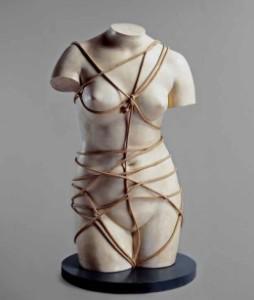|
VATICAN ENTANGLED IN WOMEN’S ISSUES
By Patricia Miller
Pope Francis has promised to lift up women’s voices and create more meaningful roles for women in the church, but if the Vatican’s latest bumbling effort to do so is any indication, it might be better for the pope to just say something else cute about puppies or bunnies. At its three-day annual meeting beginning today the Vatican’s Pontifical Council for Culture will be discussing “Women’s Culture: Equality and Difference.” As the title suggests, the meeting is less an attempt to advance the status of women in the church by giving them access to any real authority—which would necessitate admitting women to the priesthood—and more an effort to burnish the church’s tarnished reputation with women while holding fast to its “complementarian” views. The effort started off disastrously when the Vatican created a widely derided video featuring a sexy blonde Italian actress rather vampishly soliciting short videos from women to be part of a “great meeting of cardinals and bishops in Rome” to discuss their lives—without them. While the Vatican notes that a panel of women had a hand in drafting the conference document, the actual discussions about the lives of women will be held by the all-male Pontifical Council for Culture, who will in all their manly wisdom ponder such questions as why “women had so little impact on the Church’s structures.” And, in perhaps one of the greatest “paging Dr. Freud” moments in recent history, this is the image the Vatican chose to illustrate the conference document: Yes, an institution terrified of women and sex has chosen an image of a woman—a headless, depersonalized women—with her private parts bound in rope. An institution that has sough to contain what it clearly believes to be the destructive power of women’s sexuality by refusing to condone access to contraception, thereby maintaining the link between sex and procreation, with pregnancy as “punishment” for stepping out of bounds, is using an image of a women’s generative anatomy physically girded and bound. The actual conference document is more or less unintelligible, written in passive-voice Vatican-speak that sounds like a medieval monk who’s just woken up and encountered the modern world:
Got it? Besides such Vatican chestnuts as women are “much more capable of tenderness and forgiveness than men” and “the physicality of women…finds in the womb its greatest expression,” we get a random warning against plastic surgery as “aggressive toward the feminine identity” and a “burqa made of flesh.” Making women truly equal, however, is definitely not the answer to the problem of women being given the pastoral “ideological and ancestral left-overs:”
In the end, the council ponders why the church holds so little appeal for women, who, sadly, “no longer spend their afternoons reciting the rosary or taking part in religious devotions” like in the good old days:
Gee, I don’t know. What is it about the image of womanhood in the church that women find so off-putting? I hope they don’t get all tangled up trying to figure it out.
|
.
Any original material on these pages is copyright © BishopAccountability.org 2004. Reproduce freely with attribution.
